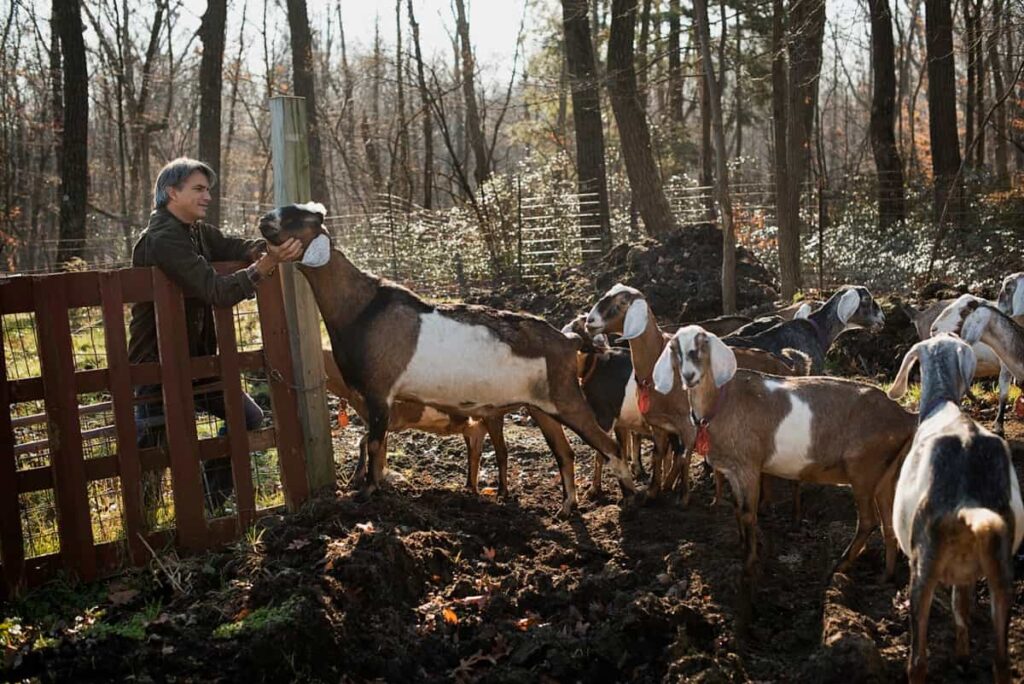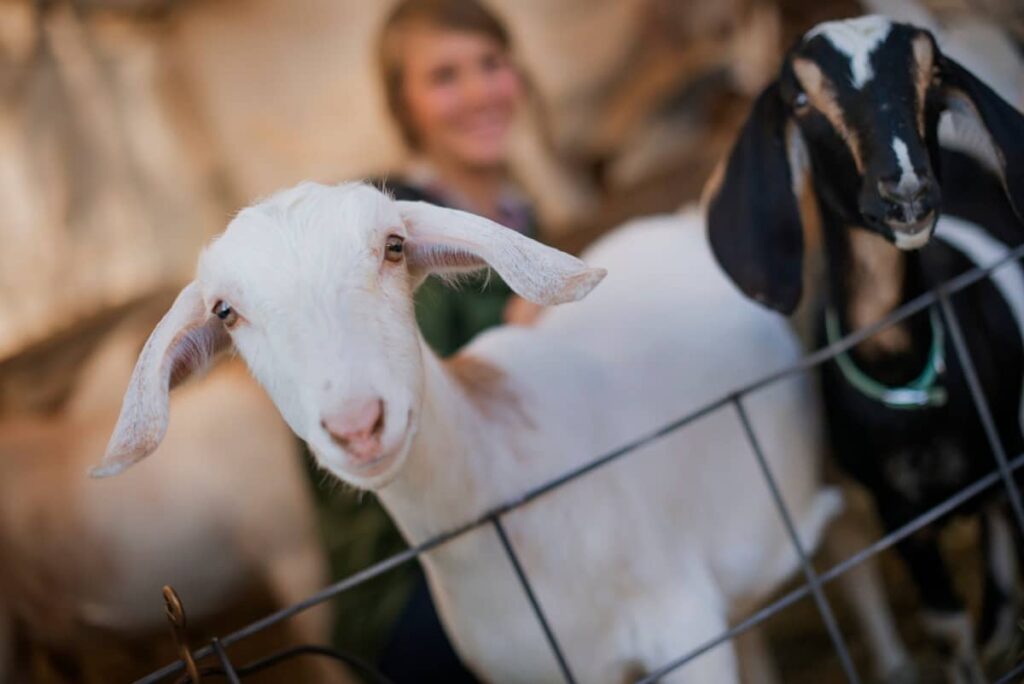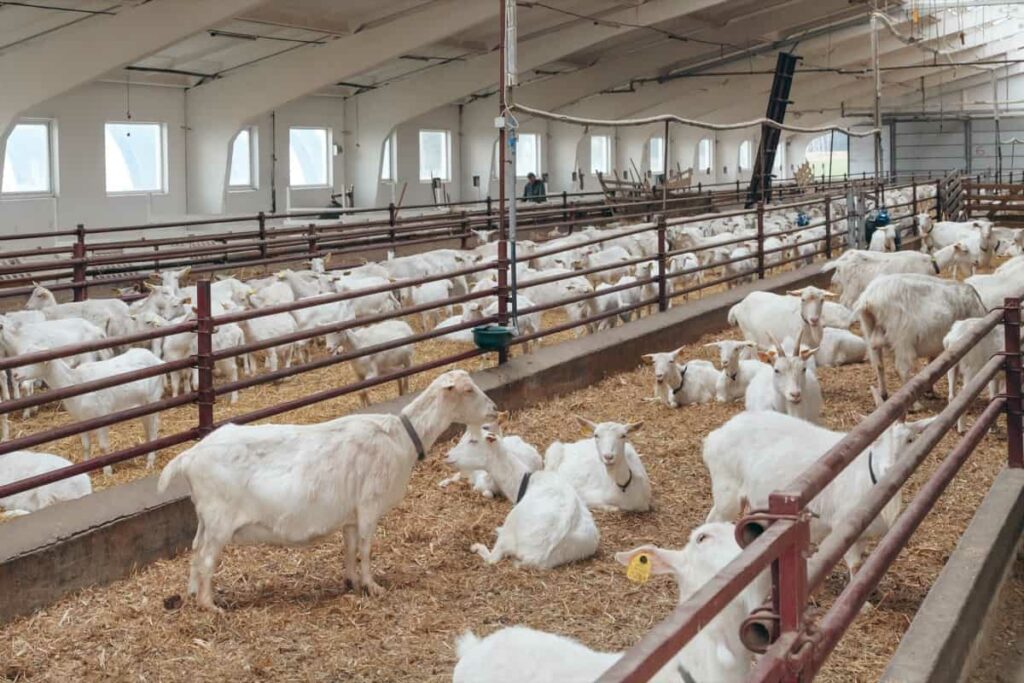Bakri Palan, or goat farming, is a widespread agricultural practice that involves raising goats for various purposes like meat, milk, and fibre production. It is a lucrative venture for beginners as goats are relatively easy to grow, and their products are in high demand. Goats are also low-maintenance and adaptable animals that can thrive in different environments.

This blog post aims to give beginners a basic understanding of goat farming by discussing essential aspects like goat breeds, farm setup, feeding and nutrition, health and care, breeding, and marketing and sales.
Understanding Goat Farming for Beginners
Need for Bakri Palan (Goat Farming) Business
Bakri Palan, or Goat Farming, is becoming increasingly popular due to its high profitability and relatively low investment. As per the Food and Agriculture Organization (FAO) report, goats contribute to the livelihood of more than 80% of the world’s smallholder farmers. Goats are a source of high demand for milk, meat, and other by-products and fetch reasonable prices in the market.
Furthermore, goats require less space and have a shorter generation interval than other livestock, making them a more profitable choice for small-scale farmers. The increasing demand for goat products in the global market and the low capital requirement make Bakri Palan a lucrative business option for beginners.
Best Popular Goat Breeds
- Select productive breeds that can grow well in your local weather.
- Alpine, Jamunapari, LaMancha, Nubian, and Saanen goats are the best dairy goat breeds for commercial milk production.
- Boer, Spanish, Kiko, Black Bengal, and Beetal goats are highly-producing meat goat breeds.
- Angora goats are suitable for profitable fur production.
- Pygmy or Dwarf goats are ideal for those who want to raise goats as pets.
Benefits of Bakri Palan/Goat Farming for Beginners
- Low Investment: Goat farming requires less investment than other livestock farming businesses. It’s an affordable option for beginners.
- High Demand for Goat Meat: Goat meat is consumed by almost all sections of society, and there is no religious taboo over it. It’s a lean meat with lower cholesterol content, making it a healthy option.
- Tolerant Eaters: Goats can eat almost every type of plant that other animals do not consume. They are careful eaters and can tolerate bitter taste to a greater extent.
- Adaptable to Different Climates: Goats can live in almost all climatic conditions, making them a suitable option for farmers in different regions.
- Organic Manure: Goat droppings are rich in phosphorus, nitrogen, and potassium, making them excellent organic manure for crops.
- High Milk Production: Goats start milking by the age of 16-17 months and are productive breeders. Giving birth to three kids within two years and producing twins is a usual feature.
- Easy to Start: A goat farm can be started with just one goat and gradually increased to a herd or developed into a large commercial unit.
In case you missed it: Goat Breeding and Genetics for Improved Productivity and Disease Resistance

Basic Needs to Setting up the Goat Farm/Bakri Farm
When selecting goats, it is important to choose healthy and lively animals and get at least two, as they are social animals. For milk production, a healthy ratio is one buck to every 30. Younger goats around eight weeks old are cheaper and friendlier to procure but need care for about a year or two before they can be bred or used for milk production.
- Land: You will need at least 1-2 acres to build sheds for the goats. It is preferable to have land close to a field for grazing.
- Shelter: A shed is necessary for the goats to rest, especially during harsh weather conditions. The shed should be spacious enough for the goats to move around freely.
- Fencing: A proper fence is essential to keep the goats within the farm area and protect them from predators.
- Feeding and Watering: You must arrange a proper feeding and watering system for the goats. They require clean water and fresh, nutritious feed.
- Veterinary Care: You must have a good veterinarian on hand to provide regular check-ups and treatment for the goats.
- Labor: In the beginning, you may be able to manage the goats independently. However, as the number of goats increases, you must hire more labor to assist in their care.
- Capital: Starting with 8-10 goats will require around Rs. 1 lakh investment. You must also allocate funds for goat feed, medical care, and other expenses.
Housing Management in Bakri Palan
- The house must protect goats from sun, wind and rain and be elevated to avoid water logging.
- Use local materials like grass, bamboo, and wood for construction
- Ensure good ventilation and easy cleaning.
- Provide 1.8 sq. mt. Per doe and 2.4 sq. mt. Per buck in group housing, and 1.8 X 1.8 sq. mt. for ten kids.
- Avoid overstocking and quarantining sick animals with healthy animals.
Feeding Management for Bakri Palan
- Goats are meticulous eaters and can thrive on agricultural by-products and waste.
- Provide leguminous fodder and grains like pulses, wheat, maize, etc.
- Give feed composed of at least 14-15% protein and high mineral composition like iodized salt, bone meal, zinc oxide, etc.
- Growers get 100g concentrate mixture daily, while adults and Bucks get 200-250g daily.
- Each goat consumes 5-7 Kg of green fodder and a litre of water daily.
- An acre of fodder can feed 35 goats.
Health and Care in Bakri Palan
Newborn kids must be fed with colostrum immediately after birth and for up to 5 days. This helps in developing better immunity in the kid. After the initial five days, the amount of doe’s milk provided to the kid must be 10% of the kid’s body weight. Pregnants must be given a concentrated mixture of 250-300 grams daily. The amount of feed must be reduced gradually from a week before parturition, and the amount of fodder must be increased. This facilitates easy delivery.
Breeding and Reproduction in Goat Farming
- Selecting the right buck and doe is key to successful breeding.
- The ideal kidding interval is 8-9 months, with two kiddings annually.
- The estrous cycle occurs every 17-21 days, and the heat period lasts 18-36 hours a doe.
- For optimal conception rate, the doe must mate with the buck 10-15 hours after the onset of heat.
- The gestation lasts 155 days, and females can be used for breeding for 5-7 years.
- Pedigrees are ascertained at purchase, and the animals are vaccinated against diseases.
- The male and female ratio must be maintained, and male bucks must be replaced every 2-3 years to avoid inbreeding.
- Ideal breeding stock should be at the prime stage of production, in good health, and have good vigour.
- Animals are observed for 15 days to check for animal behavior and diseases.
Kid Management in Goat Farming
- Newborn kids must have mucus cleaned and be given colostrum for the first five days.
- Castration of male kids is done at 1-2 months of age.
- Regular cleaning and disinfection of sheds, food and water managers are necessary.
- Deworming and ectoparasite control with acaricides are done every six months.
- Vaccinations against diseases and the prevention of zoonotic diseases are important.
- Sick goats must be isolated and treated immediately.
Essential Beginners Tips for Raising Goats/Bakri
- Proper Shelter: Goats require adequate shelter to protect them from extreme weather conditions. The shelter should be well-ventilated, have adequate drainage, and be clean and dry.
- Proper Diet: Goats require a balanced diet of hay, grains, and water. Feeding them nutritious food will help them grow healthy and productive.
- Regular Health Check-ups: Monitoring your goats’ health and scheduling regular check-ups with a veterinarian to prevent and treat diseases is essential.
- Proper Hygiene: Goats are susceptible to infections, so it’s important to maintain proper hygiene in the shelter and the surrounding areas.
- Adequate Space: Goats require adequate space to move around and exercise. Overcrowding can lead to stress and disease.
- Social Interaction: Goats are animals that require interaction with other goats and humans. It’s important to provide them with opportunities for socialization.
In case you missed it: Innovative Housing and Shelter Designs for Profitable Goat Farming

Conclusion
Goat farming is a lucrative and sustainable practice. Beginners can start with a small herd of goats and gradually expand. Proper management, feeding, breeding, and healthcare are crucial for successful goat farming.
- Goat Milking Practices and Equipment: A Beginner’s Guide
- Goat Farming for Fiber: Producing Mohair and Cashmere
- Maximizing Goat Milk Production: Tips for Dairy Goat Farmers
- Goat Farming as a Family Business: Strategies for Success
- Profitable Kenya Goat Breeds for Commercial Dairy and Meat Business
- Unlock the Secrets of Oberhasli Goat: Discover Raising and Management Practices
- Ultimate Guide to Myotonic Goats: Explore Profile to Raising
- Unlock the Secrets of Rove Goat: Discover Management Practices
- Ultimate Guide to Malwa Goat: Explore from Origin to Management Practices
Can you provide or arrange startup loan for my goat farming?
We are just information providers.
Sir, I just want to know what kind of goat can be raised in Nepal. What kind of feeding is best for Goat health and growth.
Need goat and sheep commercial training
sir let me know the name of organisation ( govt) through which i can get goat farming subsidy
i will start farm in goa and is any finance given to buy the Goa your thought will be of great help
Thank you